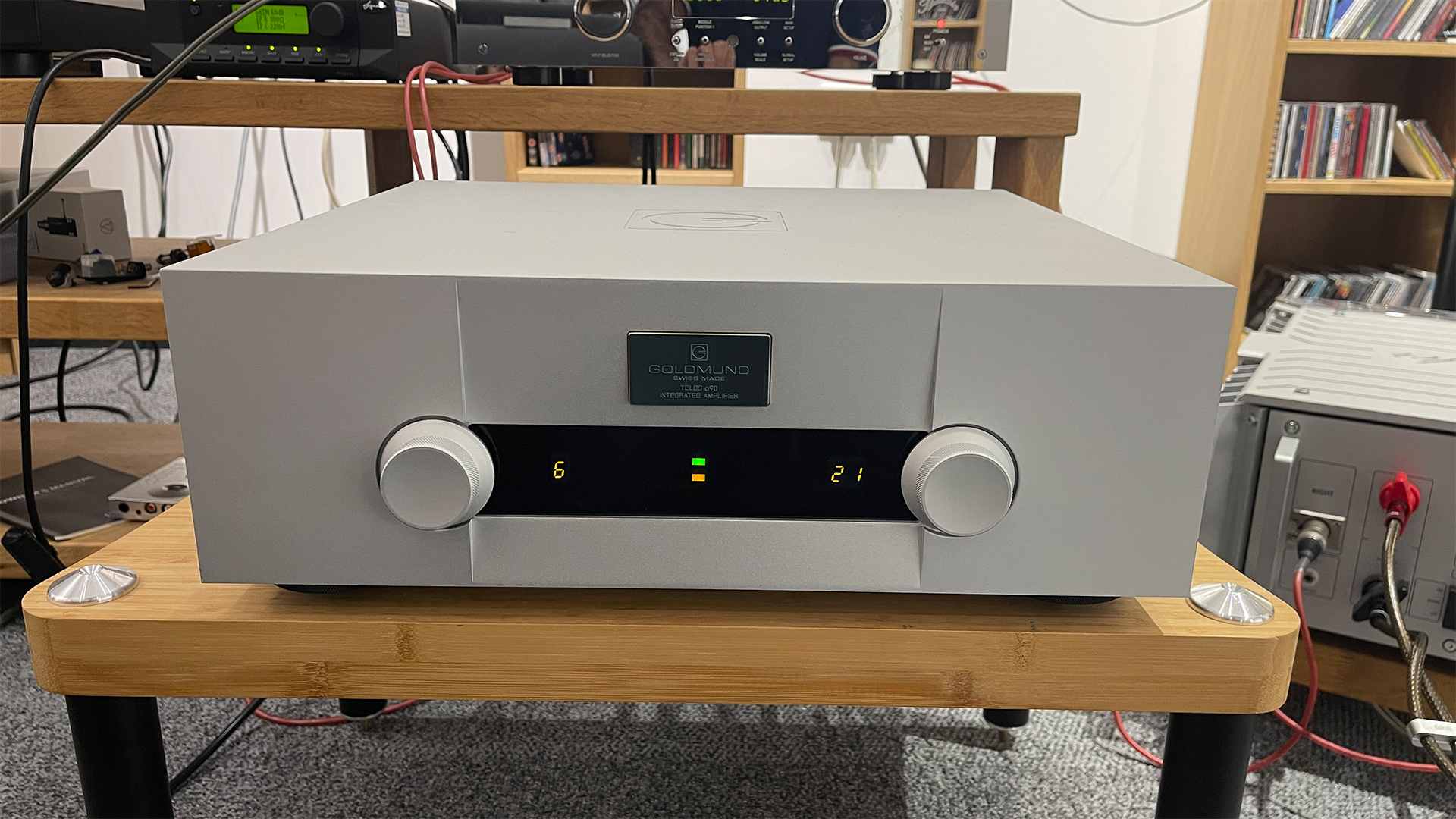What Hi-Fi? Verdict
Goldmund’s Telos 690 is one of the finest integrated amplifiers we’ve heard. Its clean, precise and ever-so-detailed sound is a joy
Pros
- +
Impeccably clean and precise presentation
- +
Excellent detail resolution
- +
Sonic agility and dynamic expression
- +
Good digital module
- +
Terrific build
Cons
- -
How much?
- -
No phono stage or headphone output
- -
No indication of the incoming digital signal resolution
Why you can trust What Hi-Fi?
Can we put the Telos 690’s price to one side, just for a bit? We know that’s a hard thing to do given just how much Goldmund's only stereo integrated amplifier costs, but indulge us, if you can.
Let’s dream a little. Imagine for a few minutes that you are lucky enough to have the kind of disposable income that allows you to buy an amplifier like this. Assume that the rest of your system is of the required level and your room is sufficiently well-behaved to reveal the sonic benefits of such a high-end product. Got that in your head? Good.
Design
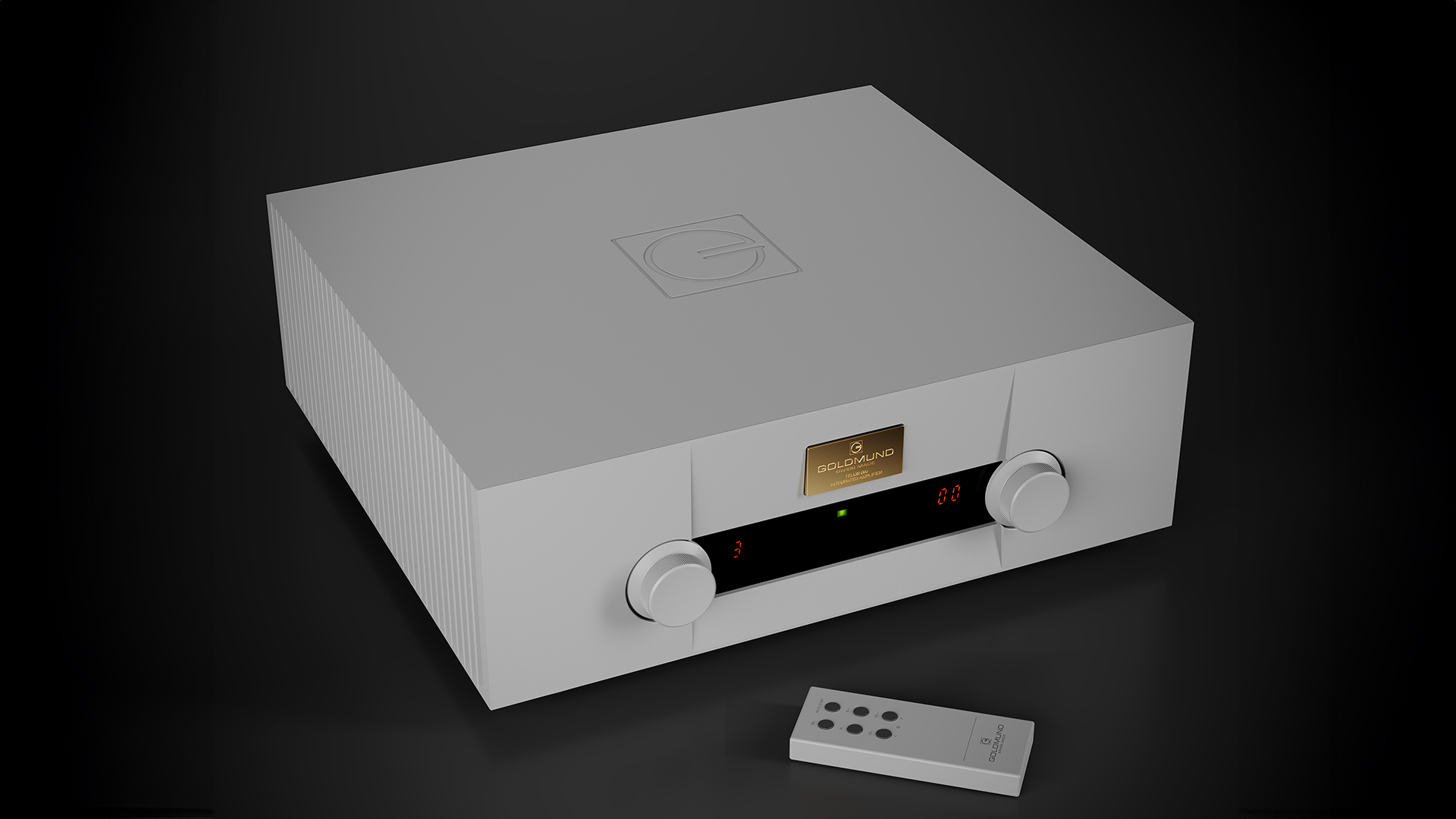
If you were in that situation, the first thing that might surprise you is just how much choice is available. You could easily buy a plethora of multi-box amplifiers from all sorts of manufacturers without trying hard. These, more than likely, would separate preamplifier and power amplifier sections from each other and probably go further by isolating each power amplifier channel into a monobloc configuration. Even the preamp’s power supply could come in a separate box. Goldmund follows this exact route with its even more extravagantly-priced top-end products. The norm at this level is lots of boxes, a wiring loom that looks like a plate of spaghetti and quite the impressive visual spectacle for those into such things.
However, there is another way, and that’s to pack it all into one box. Such an approach is the norm at more real-world price levels because it is cheaper to do. The casework is usually the most expensive part of an amplifier, so reducing the box count to one slashes that build cost. There are other advantages such as a shorter signal path (due to avoiding the typically long interconnects between the pre and power sections) and the resultant reduction of any cable mess.
The downside of an integrated amplifier design? Usually, it’s a worse performance. The need to cram everything into one box offers plenty of opportunity for unwanted interactions, and those take their toll. The reduced space results in less-than-optimal circuit layouts and a compromised power supply situation, and these things all degrade sound quality. Heat, and its management, is another major issue. But, as Goldmund has shown here, with enough expertise and budget there are ways around such things.
Build & features
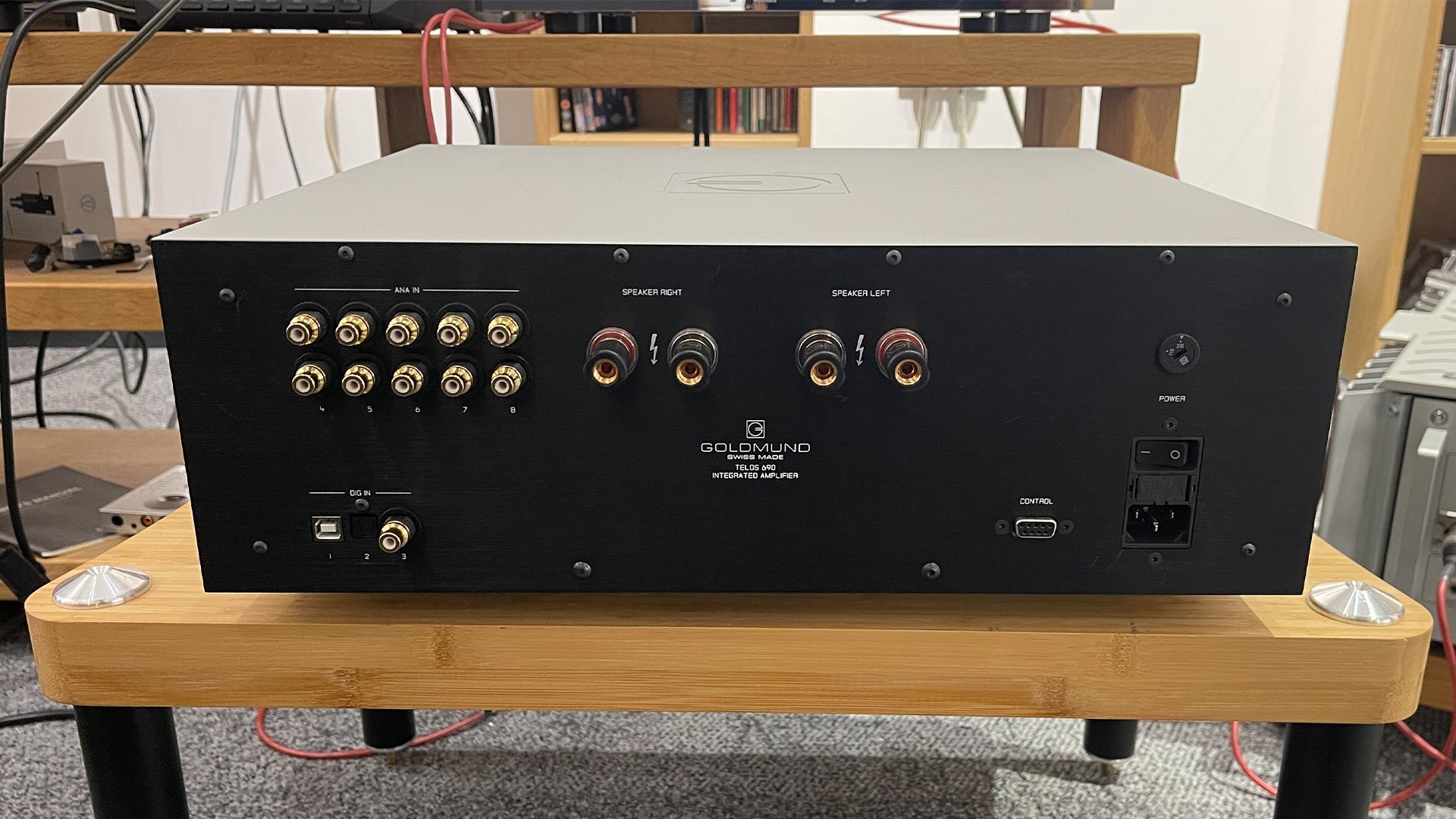
Admittedly, the Telos 690 has kept things simple by current integrated amplifier standards. While it includes a digital module, there is no phono stage here or a headphone output; both things that would make this amplifier more useful. After all, anyone opting for the neatness of a high-end integrated amplifier is unlikely to think that adding extra boxes (to listen to their record player or wired headphones) and more cables is a good idea.
Those things apart, connectivity is decent with five single-ended line-level analogue inputs and the usual trio of USB (type B), optical and coaxial digital connections. The digital module has good compatibility and can handle up to 32-bit/384kHz PCM files and DSD128. At this level, we would have expected to find balanced connections. It is a bit of a surprise that Goldmund hasn’t specified them, though this is hardly a deal-breaker for us.
The latest hi-fi, home cinema and tech news, reviews, buying advice and deals, direct to your inbox.
The Telos 690’s build quality is as excellent as you would expect at this level. Its elegant casework is superbly made and feels immensely solid, weighing in at a hefty 26kg. It uses 12mm thick aluminium alloy panels of a type that has to be sourced from a specialist supplier to the military aerospace industry. Once in place, there are no visible fixings, which gives the Telos 690 a classy and elegant appearance.
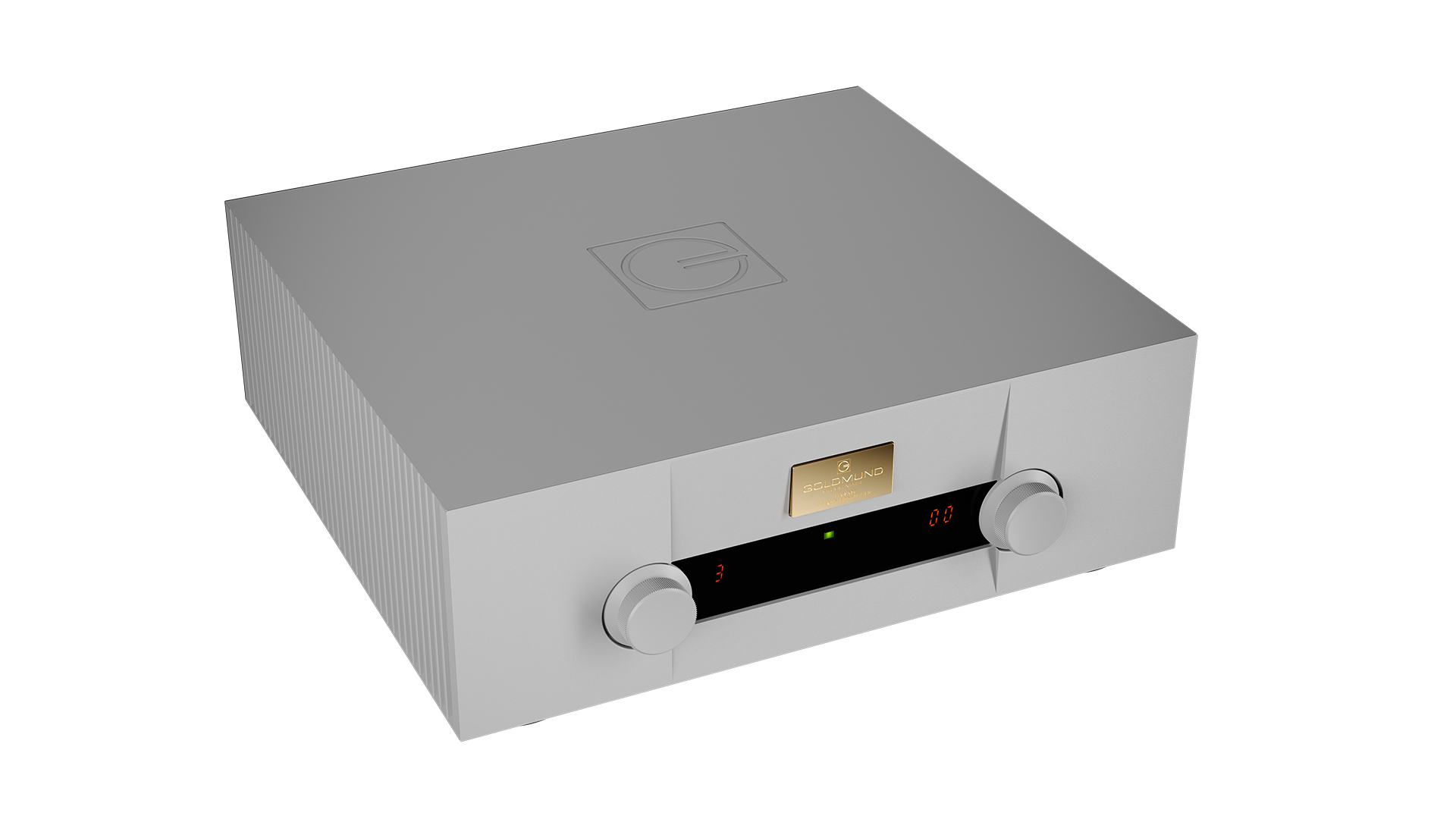
Type Integrated
Power 250W per channel
Phono stage? No
Inputs Line level x5, optical, coax, USB Type B
Outputs N/A
Bluetooth? No
Headphone output? No
Dimensions (hwd) 16.5 x 44 x 44.5cm
Weight 26 kg
Take a look inside and you will find that the impressive internal bridge design we last saw on the previous generation Telos 590 Next Gen is still on the menu. This substantial item not only improves the already impressive structural rigidity of the casework but also equalises any temperature difference between the amplifier’s output devices. It is just one example of many where the company uses marginal gains to improve performance.
Goldmund’s engineers have worked hard to control resonances and to ensure that any vibrational energy generated by the amplifier’s electronics is dissipated quickly. This focus has made the Telos 690 fussier about its support than just about any amplifier we’ve come across in recent years. It needs a very solid, high-mass support to work best. Our usual bamboo-shelved Atacama racks don’t work well here, leaving the integrated sounding most at home when placed directly on our test room’s solid concrete floor (as helpfully suggested by the Goldmund’s UK distributor). Get it wrong and the amplifier will sound a little stodgy and lifeless.
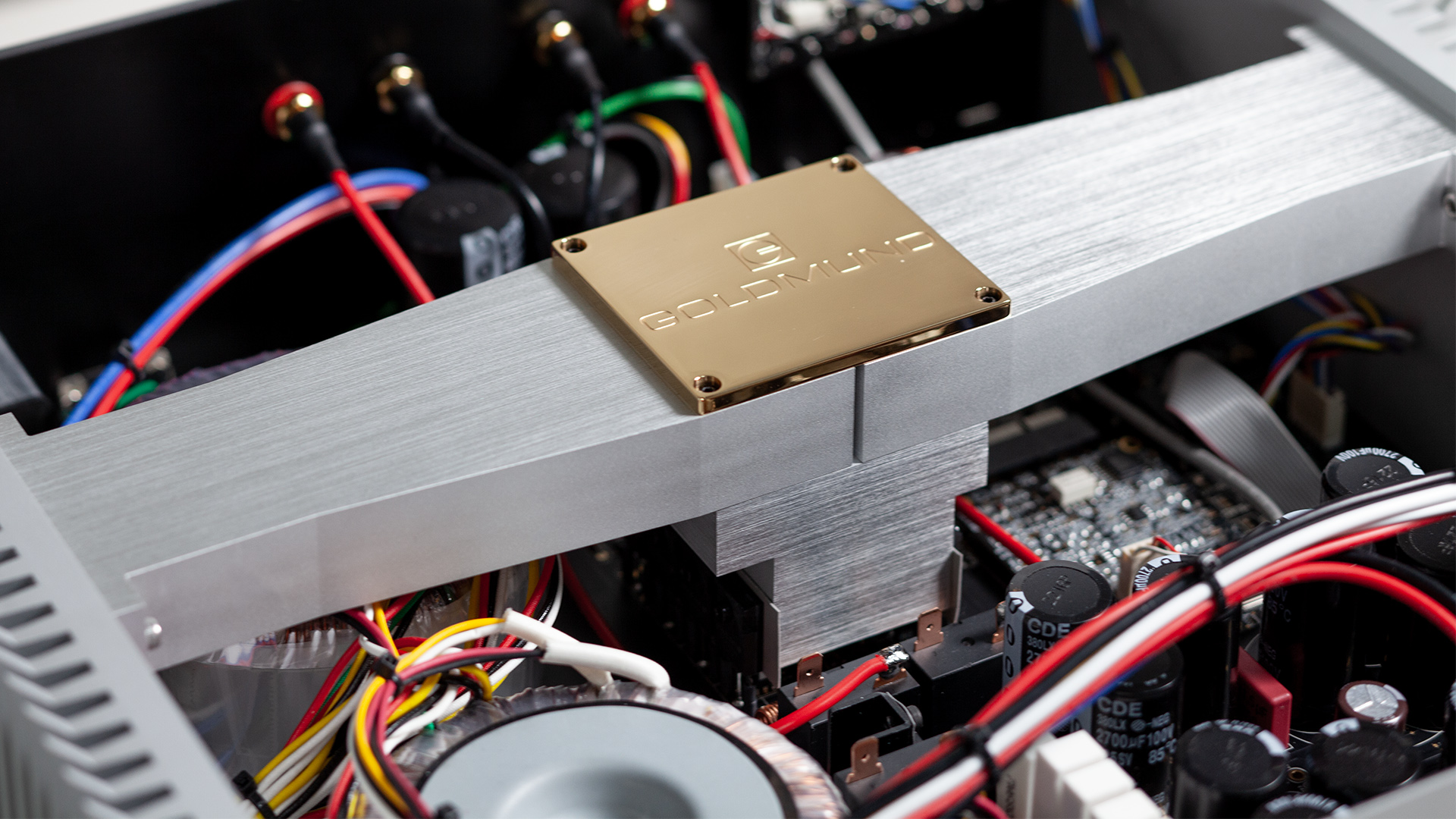
Goldmund is highly protective of the technology incorporated in this Class A/B amplifier, so there’s little information available other than it believes an amplifier has to be ulta-wide bandwidth in design (DC to at least 3MHz) to preserve phase relationships and minimise any time and intermodulation distortions within the audible range. The Telos amplifier circuit is also claimed to have a high damping factor combined with very low output impedance, which should give the 690 plenty of control over the partnering speakers.
More specifically, the Goldmund packs a pair of 350VA transformers and a generous 46,000uF of smoothing capacitance. The result is a maximum power output of 250 watts per channel into an 8-ohm load, up from the 215 watts per side of its predecessor (the Telos 590 Next Gen). Despite that generous figure, we wouldn’t describe this amplifier as a true powerhouse as its output falls well short of doubling as the load impedance halves, rising to a claimed 320 watts per side under such conditions. Still, we doubt there are many speakers on the market that this amplifier can’t drive to high levels with ease.
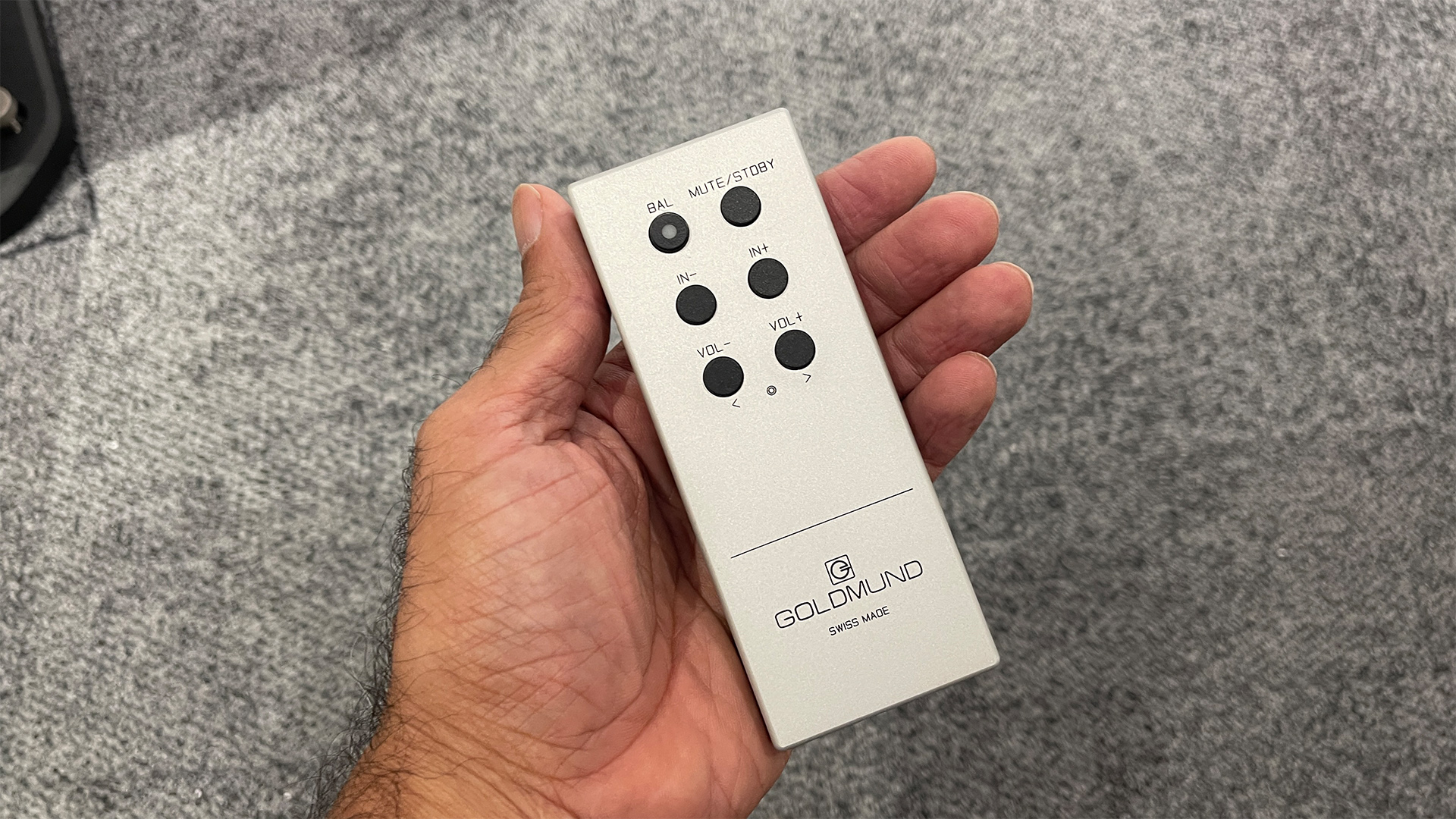
The Telos 690 is a pleasing and simple amplifier to use. The two large, smooth-turning rotary dials control input selection and volume level. They feel precise and nicely weighted.
The supplied metal remote is small, fitting into the palm of our hands with ease. Its minimal button count makes it easy to use, though some of our team don’t like the texture of the finish. That comes down to taste, of course.
The amplifier’s front panel display is about as basic as they come, showing just volume level and input selected. It would have been handy for it to also indicate the resolution of an incoming digital signal, so at least we could confirm the quality of the data stream. This is something we noted with its predecessor too.
Sound
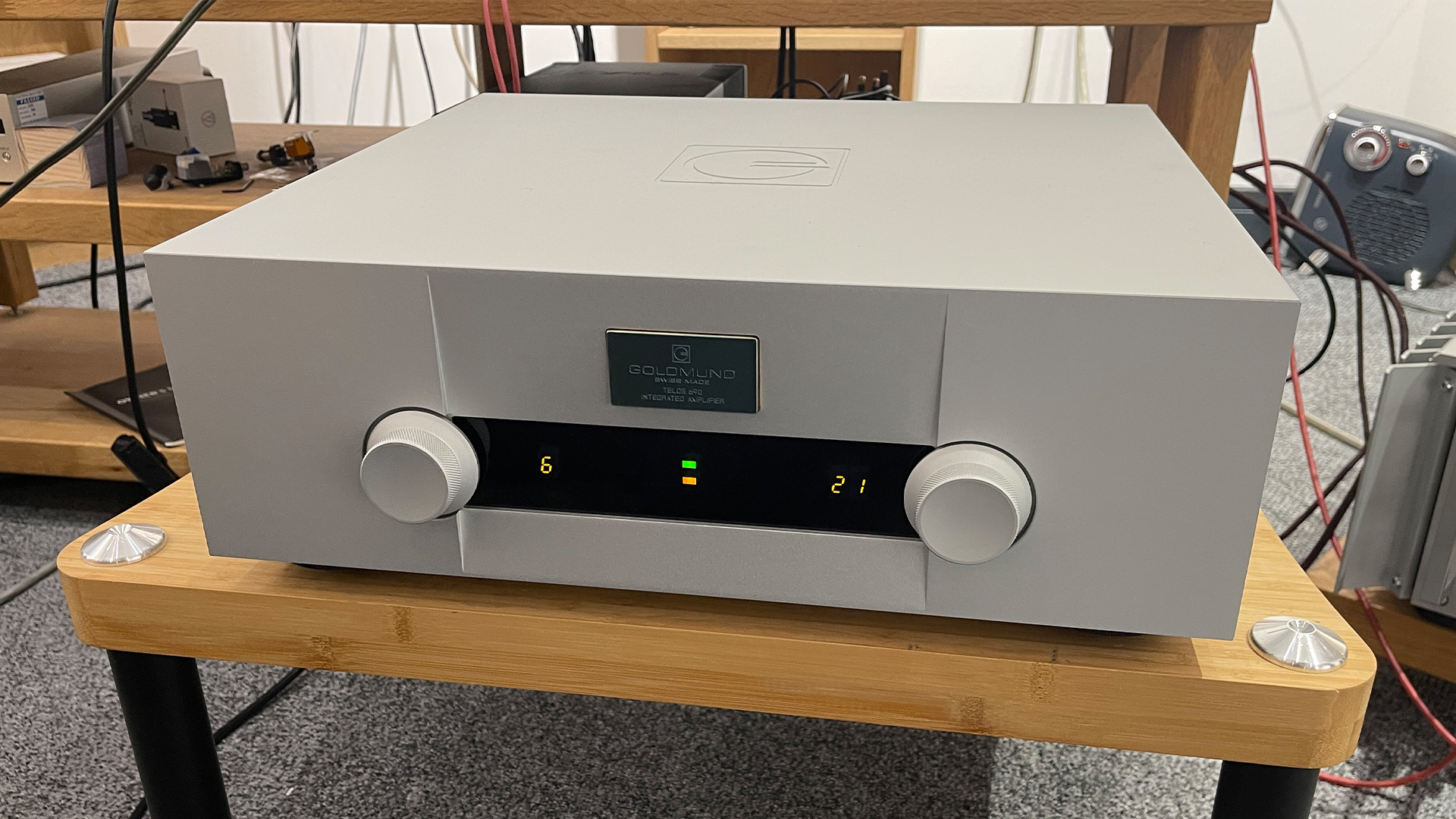
Any amplifier at this level demands top-class partnering equipment if it is to shine. The Goldmund is no different. Our sources are Naim’s ND555/555 PS DR music streamer and the Technics SL-1000R/Kiseki Purpleheart MC record player feeding Cyrus’s Phono Signature/PSX-R2 phono stage. Partnering speakers include ATC’s SCM50, Wilson Benesch’s Discovery 3Zero and Audiovector’s Trapeze Reimagined. Our cables are premium options from Vertere Acoustics and Chord Company. We have our reference Burmester 088/911 MkIII amplifier combination to hand as a benchmark at this price level.
Anyone familiar with Goldmund amplification products will find much that’s familiar here. By conventional standards the Telos 690 sounds amazingly agile and precise. It is a model of control and clarity, taking a dense piece of music such as Mahler’s Symphony No.8 and laying it out in front of the listener without confusion or blurring. This Goldmund is a superb retriever of detail and is outstanding in the way that it can organise all that information into a cohesive and convincing whole.
Tonally, it sounds as neutral as they come, rendering instrumental textures with an unforced naturalness and fluidity that’s rare to hear, even in amplification at this level. Quite simply, instruments sound more authentic and convincing. The amplifier’s overall character does still veer slightly towards the dry side, particularly at high frequencies but never so much that it distracts.
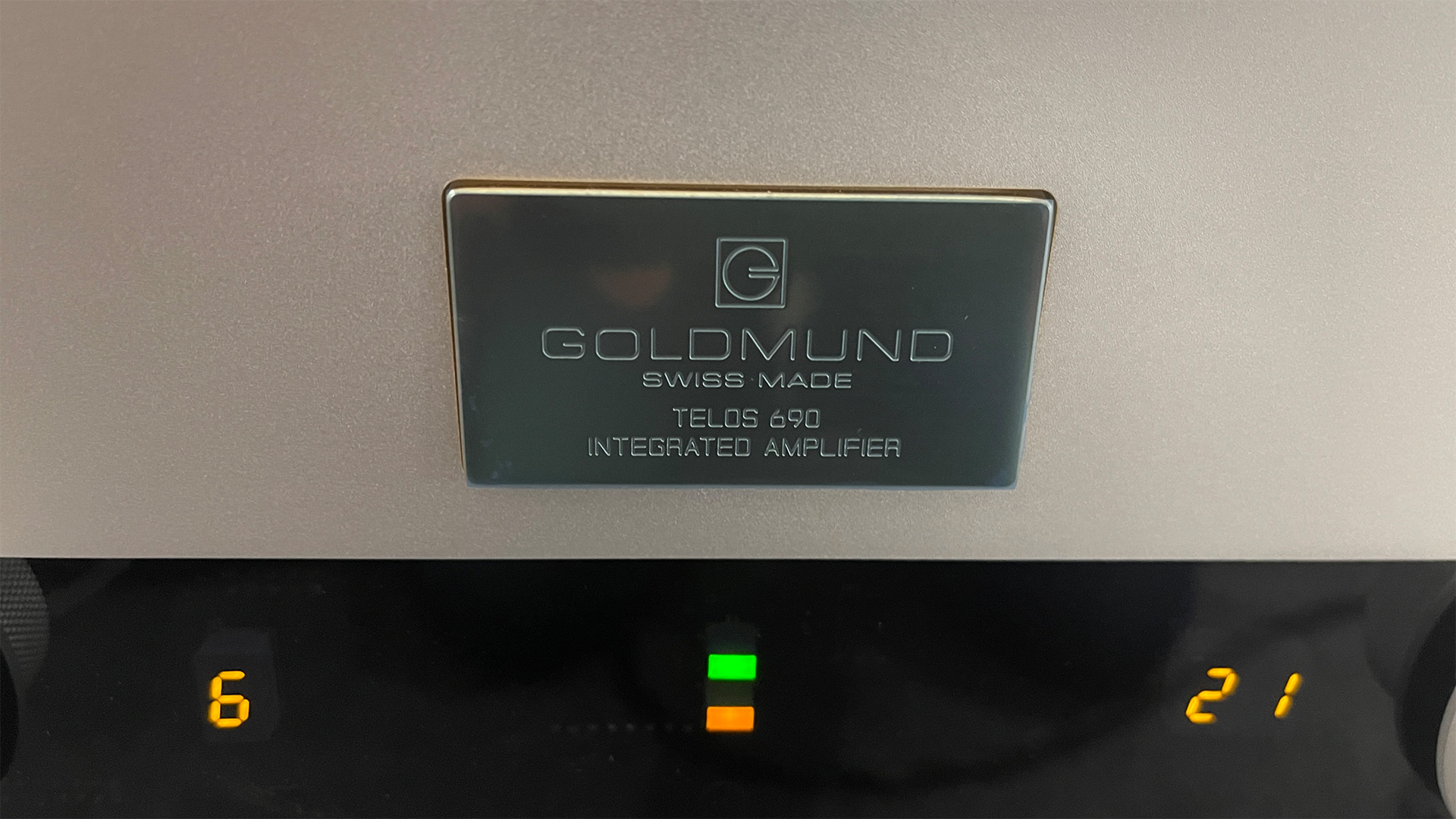
While we have come to expect neutrality from Goldmund’s products, the Telos 690 does surprise us with its sonic authority. It sounds significantly more muscular than its Telos 590 Next Gen predecessor without trading an ounce of the responsiveness or resolution that sets the brand’s amplifiers apart. Dynamic expression of both the large and low-level variety is superbly handled, with the integrated capable of generating huge dynamic sweeps when the music demands while still delivering low-key moments with an enviable lightness of touch.
Stereo imaging is rendered with the crisply organised precision that we would expect from Goldmund, though the soundstage doesn’t match the airy spaciousness we hear from our Burmester pre/power. Still, it is nicely layered and conveys image depth very well.
It turns out that the Telos 690 can dance too. We have a great time listening to the likes of Beyoncé, Barrington Levy and the Rolling Stones, with the amplifier delivering rhythm tracks with enthusiasm. This integrated is great at communicating the energy in the music and thumping out the lows with unerring grip and punch.
We switch to the digital inputs and are pleased to find that the internal number-crunching circuit is a good one. It doesn’t quite match the subtlety and expression of the DAC in our reference Naim streamer but still delivers much of the clarity and character we so enjoy from the analogue line stages. Unless you are going to invest in a truly high-end external DAC – something of the level of Chord’s Hugo TT2 comes to mind – the ’690’s internal module will serve you just fine.
Verdict
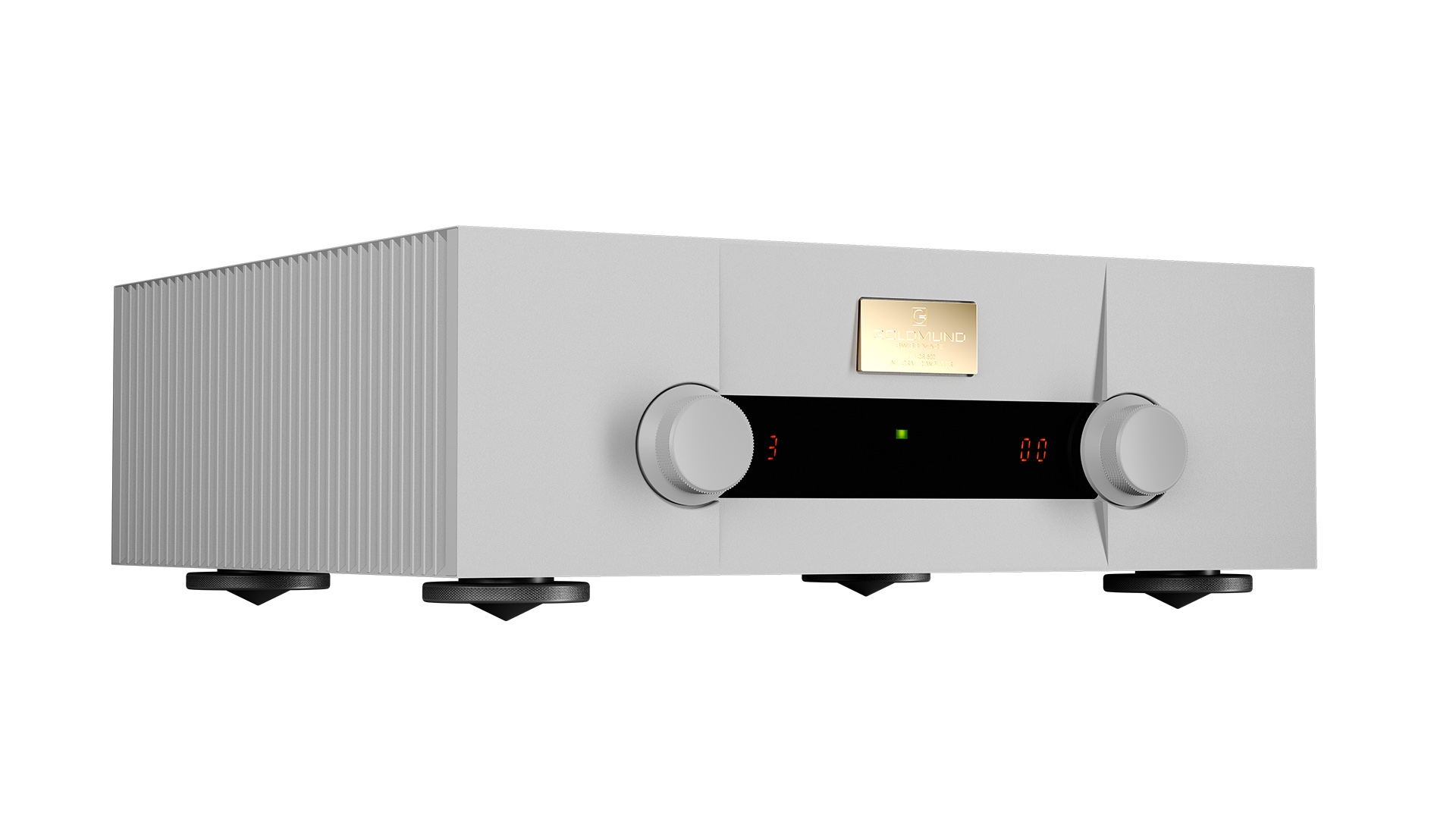
Our time with the Telos 690 passes all too quickly. It is a highly capable amplifier that ticks all the boxes as far as ‘hi-fi’ qualities are concerned. Tonality, transparency, detail resolution, stereo imaging and dynamic expression are all of a high level. It is an absolute treat for those who like to dissect a recording and analyse every part of the recording’s production.
We like doing that sometimes too, but our interest is really in finding products that allow the music to shine. Goldmund’s Telos 690 does that brilliantly. And that hefty price? If we had the budget we wouldn’t hesitate to pay it.
First reviewed: October 2024
SCORES
- Sound 5
- Build 5
- Features 4
MORE:
Read our Luxman L-509Z review
Also read our full Lavardin ITx review
Read our McIntosh MA8950 review
These are the 8 best integrated sterero amplifiers chosen by our experts
What Hi-Fi?, founded in 1976, is the world's leading independent guide to buying and owning hi-fi and home entertainment products. Our comprehensive tests help you buy the very best for your money, with our advice sections giving you step-by-step information on how to get even more from your music and movies. Everything is tested by our dedicated team of in-house reviewers in our custom-built test rooms in London, Reading and Bath. Our coveted five-star rating and Awards are recognised all over the world as the ultimate seal of approval, so you can buy with absolute confidence.
